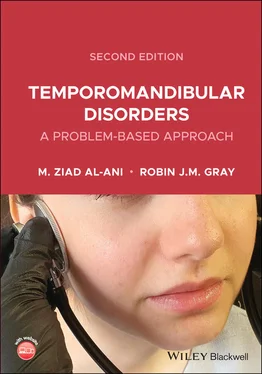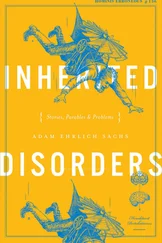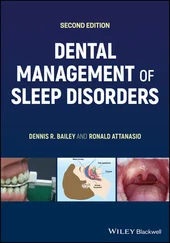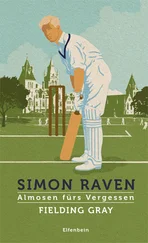Limit of Liability/Disclaimer of Warranty
The contents of this work are intended to further general scientific research, understanding, and discussion only and are not intended and should not be relied upon as recommending or promoting scientific method, diagnosis, or treatment by physicians for any particular patient. In view of ongoing research, equipment modifications, changes in governmental regulations, and the constant flow of information relating to the use of medicines, equipment, and devices, the reader is urged to review and evaluate the information provided in the package insert or instructions for each medicine, equipment, or device for, among other things, any changes in the instructions or indication of usage and for added warnings and precautions. While the publisher and authors have used their best efforts in preparing this work, they make no representations or warranties with respect to the accuracy or completeness of the contents of this work and specifically disclaim all warranties, including without limitation any implied warranties of merchantability or fitness for a particular purpose. No warranty may be created or extended by sales representatives, written sales materials or promotional statements for this work. The fact that an organization, website, or product is referred to in this work as a citation and/or potential source of further information does not mean that the publisher and authors endorse the information or services the organization, website, or product may provide or recommendations it may make. This work is sold with the understanding that the publisher is not engaged in rendering professional services. The advice and strategies contained herein may not be suitable for your situation. You should consult with a specialist where appropriate. Further, readers should be aware that websites listed in this work may have changed or disappeared between when this work was written and when it is read. Neither the publisher nor authors shall be liable for any loss of profit or any other commercial damages, including but not limited to special, incidental, consequential, or other damages.
Library of Congress Cataloging‐in‐Publication Data
Names: Gray, Robin J. M., author. | Al‐Ani, M. Ziad, author.
Title: Temporomandibular disorders : a problem‐based approach / Dr. M. Ziad
Al‐Ani, Dr. Robin J.M. Gray.
Description: Second edition. | Hoboken, NJ : Wiley‐Blackwell, 2021. | Robin
J.M. Gray's name appears first in the previous edition. | Includes
bibliographical references and index.
Identifiers: LCCN 2020053090 (print) | LCCN 2020053091 (ebook) | ISBN
9781119618744 (paperback) | ISBN 9781119618768 (adobe pdf) | ISBN
9781119618751 (epub)
Subjects: MESH: Temporomandibular Joint Disorders–therapy |
Temporomandibular Joint Disorders–diagnosis | Temporomandibular
Joint–physiopathology
Classification: LCC RK470 (print) | LCC RK470 (ebook) | NLM WU 140.5 |
DDC 617.5/22–dc23
LC record available at https://lccn.loc.gov/2020053090
LC ebook record available at https://lccn.loc.gov/2020053091
Cover Design: Wiley
Cover Image: © agsandrew/iStock/Getty Images
Preface to the Second Edition
This is the second edition of Temporomandibular Disorders: A problem‐based approach . This edition is an updated and revised copy of the first edition to enhance making clinical relevance immediately accessible to the reader.
All chapters have been revisited and two new chapters were added. More colour photographs have been used and flowcharts have been added in Appendix I for a brief description of some essential concepts in this field. A link in the text was added with a symbol indicating the number of the relevant flowcharts at the end. The text has been updated with many new relevant sections. There are two new chapters on evidence‐based splint therapy management as well as the aetiology and management of bruxism. These are evolving and dynamic topics which need continuous updating. Some chapters have changed relatively little, such as Orofacial pain and You and the Lawyer, but the importance of these two aspects have been highlighted in different sections of the book. Self‐directed learning is critical to develop understanding and some new questions were added to Appendix III. References have been updated and the most relevant evidence‐based references and other key papers were included in the Further Reading of each chapter.
This edition, sadly, did not witness the contribution of Robin Gray. He died shortly after the book proposal of this second edition was submitted.
This book sets out to establish some new concepts and philosophies in temporomandibular disorder (TMD) learning. It contains a series of everyday situations that will be encountered in practice. The answers are there but it is up to the reader to find them!
Learning is a dynamic process and those who are involved actively will gain more than passive recipients of knowledge. Problem‐ or enquiry‐based learning should provoke thought and arouse readers' curiosity, motivating them to learn and guiding them into creative thinking. Giving readers a real‐life clinical scenario will structure their thoughts, increasing the effectiveness of information delivery and lead to a logical conclusion.
The case histories are stand alone, and each should contain sufficient information for the reader to reach the correct diagnosis and formulate a correct treatment plan that is in the patient's best interests.
There will inevitably be some repetition in the text especially in relation to the chapters on anatomy, function, pathology, classification, and clinical examination. This is because we did not want the reader to have to constantly cross‐refer to earlier chapters when reading the case histories. Although there will be some duplication, the case histories will introduce new facts of specific relevance to that situation. We hope that this will meet students' demands because the earlier chapters which are for information can be applied in the later case studies.
There is a unique link to an online interactive quiz ( www.wiley.com/go/al-ani/temporomandibular-disorders-2e). This quiz aims not only to test your knowledge of TMD but also to make reading this book more enjoyable, stimulating, and productive.
We have provided a further reading list of relevant evidence‐based articles which, as far as possible, are either from systematic reviews or randomised controlled trials published in evidence‐based dentistry journals. Therefore, they provide the most up‐to‐date information.
The final chapters are practical guides of how to make splints and samples of patient information sheets that can be used as templates. We hope therefore that we have addressed not only WHY but also HOW.
The author wishes to acknowledge the kind permission of the British Dental Journal in reproducing the annotated images, and Dr Paul Rea and Caroline Morris at the University of Glasgow for the anatomy figures annotated in Chapter 2.
Denise Margaret Coogan has been kind in permitting us to use her as a photographic model in Chapters 3and 17.
I am very grateful to Tanya McMullin and Loan Nguyen for the advice and support in the production of this text.
About the Companion Website
Don't forget to visit the companion website for this book:
www.wiley.com/go/al-ani/temporomandibular-disorders-2e 
There you will find valuable material designed to enhance your learning, including multiple choice questions.
Читать дальше













![John Bruce - The Lettsomian Lectures on Diseases and Disorders of the Heart and Arteries in Middle and Advanced Life [1900-1901]](/books/749387/john-bruce-the-lettsomian-lectures-on-diseases-and-disorders-of-the-heart-and-arteries-in-middle-and-advanced-life-1900-1901-thumb.webp)